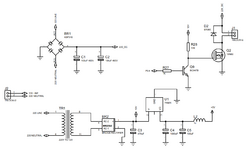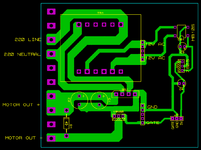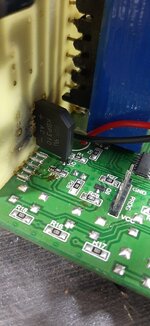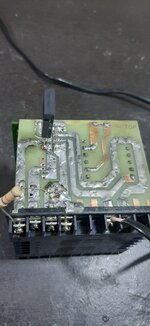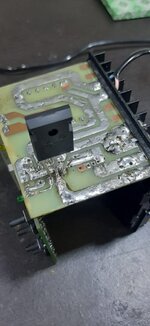gauravkothari23
Advanced Member level 2
Hi all.
I am trying to interface a 380V DC 180 Watts DC Motor using 8051 controller. (Circuit Diagram Attached)
As per the circuit, the problem what i am facing is, As soon as i connect the system to 220V AC line, sometimes the bridge BR1 (KBP310) and Everytime 19N60 mosfet gets busted.
Can anybody please help me what the problem is with the circuit. Even checked for the shorts and Missing tracks, but everythin
i am going to use PWM to drive the motor.
Initially for testing i have just placed an LED with 100K 2 watts Resistor at the output to check it i get a proper output.
I Made a small Test, Using a 220V to 24V Transformer.
I Removed TR1 which is converting 220V AC to 12V AC and powering the controller.
and applied 24V AC to BR1 which is Powering the Motor.
and applied 12V DC from 220V to 12V DC Adaptor at the input of BR2 Pin AC-1 and AC-2. then the system is working perfectly, but the same when i connect to 220V AC, 19N60 Mosfet Explodes.
I am trying to interface a 380V DC 180 Watts DC Motor using 8051 controller. (Circuit Diagram Attached)
As per the circuit, the problem what i am facing is, As soon as i connect the system to 220V AC line, sometimes the bridge BR1 (KBP310) and Everytime 19N60 mosfet gets busted.
Can anybody please help me what the problem is with the circuit. Even checked for the shorts and Missing tracks, but everythin
i am going to use PWM to drive the motor.
Initially for testing i have just placed an LED with 100K 2 watts Resistor at the output to check it i get a proper output.
--- Updated ---
I Made a small Test, Using a 220V to 24V Transformer.
I Removed TR1 which is converting 220V AC to 12V AC and powering the controller.
and applied 24V AC to BR1 which is Powering the Motor.
and applied 12V DC from 220V to 12V DC Adaptor at the input of BR2 Pin AC-1 and AC-2. then the system is working perfectly, but the same when i connect to 220V AC, 19N60 Mosfet Explodes.
Attachments
Last edited:
